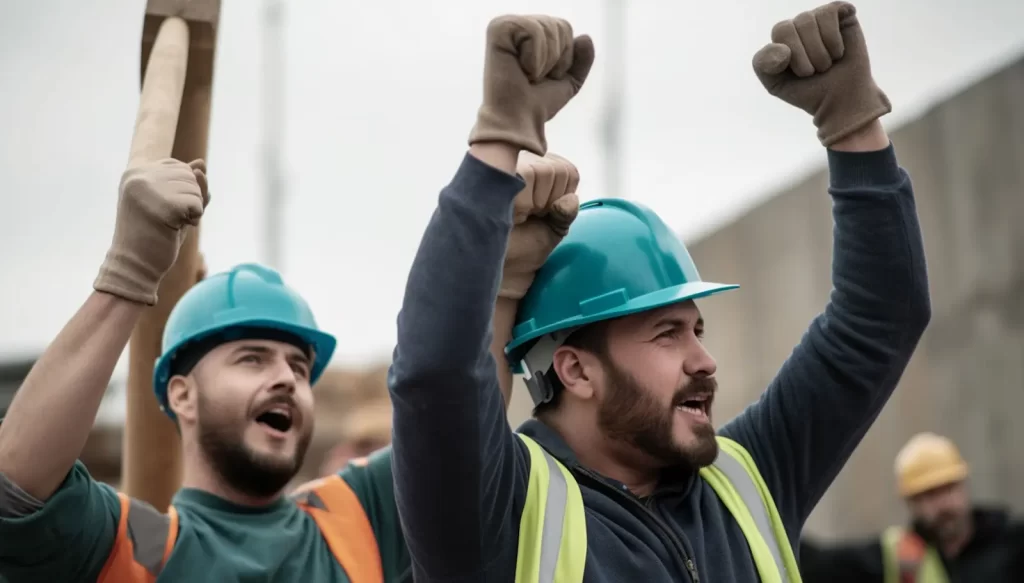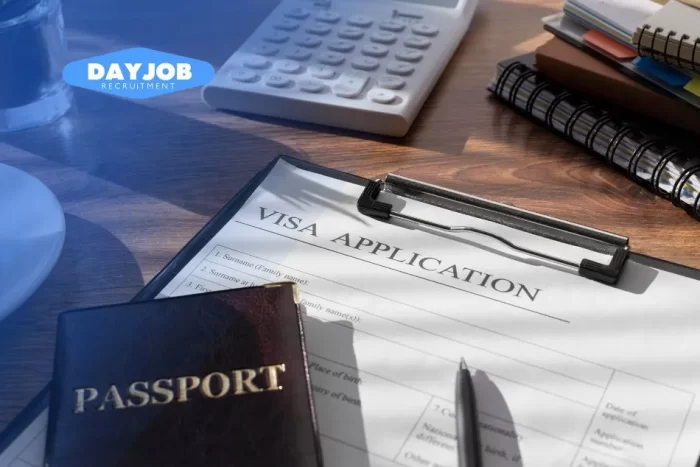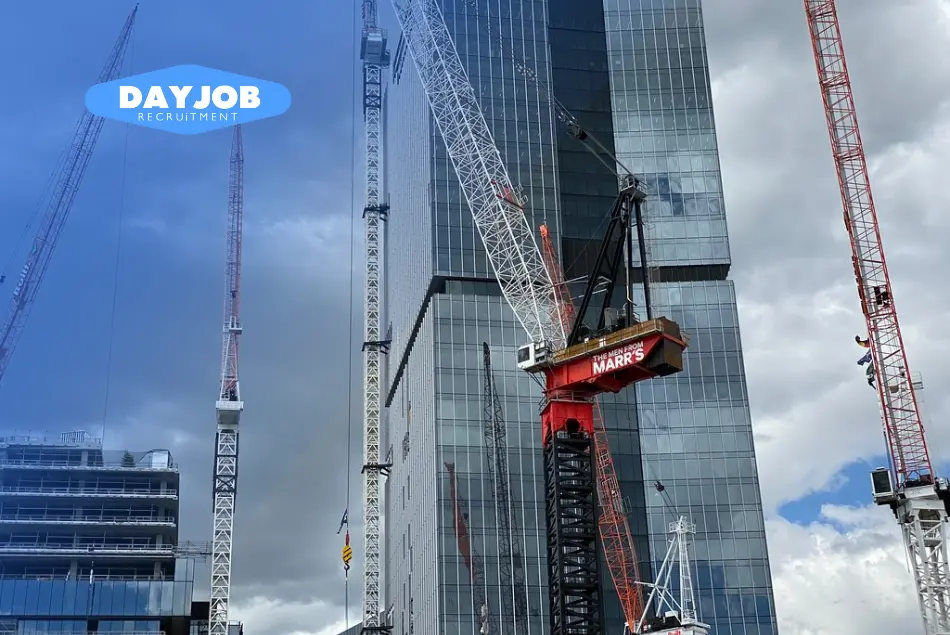Immigration policies can significantly impact many aspects of the Australian economy, including the trade sector. Various issues are involved, from labour shortages and skills gaps to industry structures and working conditions. This blog will take an in-depth look at the impact that Australian immigration policies have had on the trade sector, exploring how these policies have impacted the industry. We will also look at the Visa Types and their requirements and an overview of qualifying trade occupations in the Australian trade sector.
Key Takeaways
- Recent changes in Australian immigration policies, such as the increase in the Temporary Australia Skilled Migration Income Threshold and visa application charges, are reshaping the trade sector by influencing the availability and cost of skilled labor.
- The introduction of new visas, like the Pacific Engagement Visa and adjustments to student and graduate visa conditions, offers opportunities and challenges in filling skill gaps within the trade sector.
- Skilled migrants and international students make significant economic contributions to Australia, with policies aimed at attracting foreign talent poised to drive growth in the trades and other sectors.
- Understanding visa types and eligibility requirements, including the Skilled Regional State Sponsorship Visa and Temporary Skill Shortage Visa, is crucial for tradespeople considering immigration to Australia, as these regulations directly impact the labor market and opportunities within the trade sector.
Immigration Policies Influencing the Trade Sector

The recent changes in Australian immigration policies are poised to significantly influence the trade sector, marking a substantial shift in the dynamics of skilled labor and industry practices. Key changes include:
Australia Skilled Migration and Visa Changes
The Temporary Skilled Migration Income Threshold (TSMIT) has been raised from $53,900 to $70,000 as of July 1, 2023. This increase indicates that employers must offer a higher salary to sponsor overseas workers, potentially affecting the availability and cost of skilled labor in trades and other sectors.
Visa Application Charge Increases
From July 1, 2023, visa application charges have increased significantly, particularly for business innovation and investment visas. This may affect the inflow of skilled professionals and entrepreneurs, which could indirectly impact the trade sector.
New Visa for Pacific Migrants
The introduction of the Pacific Engagement Visa (PEV), providing 3,000 places for migrants from Pacific countries and Timor Leste, may influence the labor market in the trade sector. This visa allows selected individuals to apply for permanent residence in Australia, potentially bringing in more skilled workers.
Student and Temporary Graduate Visa Changes
Restrictions on work conditions for student visa holders and changes in the age limit for Temporary Graduate visas might affect the number of international students and graduates available to work in trades and related sectors.
Economic Contributions of Migrants
Skilled migrants have historically had a positive fiscal impact on Australia. For example, the 2018-19 skilled permanent migrant cohort is estimated to contribute $20 billion more over their lifetimes than a similar-sized cohort of the Australian population. Additionally, overseas students contribute significantly to the economy, and a proportion become permanent residents, adding to the skilled workforce.
Impact on GDP and Labor Market
Migrants have been a key driver of Australia’s GDP growth. Between 2000 and 2014, migrants contributed over $330 billion to the national GDP.
New Visa Initiatives
The government is exploring new visa categories like the Talent and Innovation visa to attract foreign nationals who can drive growth in important national sectors, including trades.
Visa Types and Eligibility for Skilled Trades Workers

Due to the increase of labour force needed in Australia today, the country has surged to open opportunities overseas and thus behooved the government to adapt to Visa types for those planning to work in Australia from a foreign land.
Skilled Regional State Sponsorship Visa
The Skilled Regional State Sponsorship Visa, also known as subclass 491, is an option for skilled trades workers who wish to live and work in specific regional areas of Australia. It permits holders to live, work, and study in specified regional areas of Australia for 5 years. A significant benefit of this skilled visa is the potential pathway to becoming your permanent visa for residency.
After 3 years of living, working, or studying in a designated regional area and meeting certain conditions (including earning a minimum income of AUD 53,900 (before July 1st, 2023) annually for three years), subclass 491 visa holders may be eligible to apply for the Subclass 191 Permanent Residence (Skilled Regional) visa. This transition to permanent residency also requires that the applicant or their partner (if included in the application) demonstrate the required income through tax returns.
Qualifications to be Eligible:
- Occupation: Applicants must have an occupation listed on the relevant skilled occupation list for regional Australia.
- Skills Assessment: A positive skills assessment from an authorized body is required to prove that the applicant has the skills and qualifications to work in their nominated occupation.
- Language Proficiency: Proficiency in English is necessary, typically demonstrated through standardized language tests like IELTS, TOEFL, PTE, etc.
- Government Nomination or Family Sponsorship: Applicants must be nominated by an Australian state or territory government agency or be sponsored by an eligible family member residing in a designated regional area.
- Invitation from the Department of Home Affairs: An Expression of Interest (EOI) must be submitted through SkillSelect. If the EOI is successful, the applicant will receive an invitation to apply for the visa.
Application Process:
- Submit an EOI through SkillSelect.
- Receive an invitation to apply for the visa.
- Lodge a formal visa application within the specified timeframe, providing all necessary documents and meeting the eligibility criteria.
Pacific Engagement Visa
The Pacific Engagement Visa initiative is designed to fortify connections between Australia and Pacific Island nations, including Timor-Leste, by offering up to 3,000 nationals annually the chance to become permanent residents in Australia. This program not only promotes cultural, business, and educational exchanges but also addresses skill shortages in the Australian trade sector. It serves as a platform for cultural exchange and mutual growth, benefiting Australia and the participating Pacific countries.
Qualifications to be Eligible:
- Age Requirement: Applicants must be aged between 18 to 45.
- Employment: A formal full-time job offer in Australia is required.
- Language and Other Requirements: Basic English proficiency, along with health and character requirements, must be met.
Application Process:
- Registration in a ballot system for applicants, their partners, and dependent children.
- Successful candidates from the ballot will then apply for the visa.
Temporary Skill Shortage Visa (subclass 482)
The Temporary Skill Shortage Visa, also known as subclass 482, is a temporary visa that addresses skill shortages in Australia’s labor market by allowing employers to sponsor skilled overseas workers when suitable local candidates are unavailable. This visa provides a solution for Australian employers to fill critical roles, helping to balance the demand for skilled labor while prioritizing the employment of Australian workers.
Qualifications to be Eligible:
- For Employees: The applicants must have relevant work experience in their field (minimum of 2 years), occupation listed on the Medium Long-Term Strategic Skills List (MLTSSL), and meet the English language proficiency requirements.
- For Employers: Employers need to be approved sponsors, demonstrate a genuine need for an overseas worker, and pass labor market testing to show they have attempted to recruit locally.
Application Process:
- The employer becomes an approved sponsor and nominates a position.
- The employee applies for the visa after nomination approval.
- Applicants must provide various documents, including passports, IDs, qualifications, skills assessments (if required), proof of English proficiency, health insurance, and character references.
- Family members can be included in the application.
Visa Streams: There are three streams for this visa:
- Short-term Stream: Allows work in Australia for up to 2 years, or 4 in certain circumstances.
- Medium-term Stream: Offers up to 4 years of stay and a pathway to permanent residency.
- Labour Agreement Stream: For applicants whose employers are part of labor agreements with the Australian government.
Qualifying Trade Occupations

Australian immigration policies significantly impact blue-collar industries by categorising specific occupations in the skilled occupation list, which outlines the qualifications required for various job roles.
Here’s a tabulated view of these sample industries:
| Industry | Qualification Required | Type of Experience/Apprenticeship |
| Carpentry | Certificate III in Carpentry or equivalent | Apprenticeship in carpentry |
| Electrician | Electrical license or Certificate III in Electrotechnology Electrician | Electrical apprenticeship |
| Manufacturing | Certificate III in Manufacturing Technology or similar | Vocational training in manufacturing |
| Construction | Certificate III in Construction or Diploma in Building and Construction | Apprenticeship or training in construction |
| Stoneworks | Certificate III in Stonemasonry | Training in stone cutting and installation |
Australia’s skilled occupation lists, which include the Short-term Skilled Occupation List (STSOL), Medium and Long-term Strategic Skills List (MLTSSL), and the Regional Occupation List (ROL), are used to determine eligibility for various skilled visas. These lists are periodically updated to reflect the changing needs of the Australian labor market.
Discover your ideal job match!
Impact of Immigration Policies on Trades Needed in Australia
Australian immigration policies have a profound influence on the availability of skilled labor, particularly in sectors where trades needed in Australia are in high demand. Recent policy changes aim to address shortages in these crucial areas by facilitating the entry of skilled migrants into the trade sector.
For instance, enhancements to visa requirements and the introduction of new visa types are strategically designed to fill gaps in trades like electrical, plumbing, construction, and metal fabrication, which continue to see a surge in demand. Understanding these policies helps potential immigrants and employers alike to navigate the complexities of the labor market and align their skills and needs with the trades most needed across the country.
Rights of Immigrants Given by the Australian Government

In Australia, all workers, including immigrants working in the trade sector, are entitled to the same fundamental workplace rights and protections, irrespective of their citizenship or visa status. These rights are safeguarded under Australian workplace laws and cannot be overridden by any contracts or agreements.
Fair Work Ombudsman
The Fair Work Ombudsman (FWO) plays a critical role in protecting and enforcing the rights of visa holders. This includes ensuring that employers comply with Australian workplace laws and immigration laws. For instance, employers cannot cancel an employee’s visa even if there has been a breach of visa conditions. Only the Department of Home Affairs has the authority to grant, refuse, or cancel visas.
Assurance Protocol
Furthermore, the Australian government has established the Assurance Protocol, which supports visa holders who have experienced workplace exploitation. Under this protocol, a worker’s visa will not be canceled due to a breach of work-related visa conditions if they have been exploited in the workplace, provided they have sought help from the FWO and are cooperating with their inquiries.
This protection is extended to visa holders under various categories, including those with permission to work, such as the Temporary Skill Shortage (TSS) visa (subclass 482) and Student visas (subclass 500 series), among others.
Awareness of Workplace Exploitation
Signs of workplace exploitation that visa holders should be aware of include threats to cancel visas, wage underpayments, unfair deductions, and being pressured to work beyond the restrictions of a visa. Visa holders experiencing such exploitation are encouraged to seek help from the FWO.
Conclusion
Australian immigration policies, particularly those related to skilled migration and visa changes, significantly influence the trade sector. These policies, including introducing new visa categories and adjusting to existing ones, play a crucial role in shaping the labor market dynamics and addressing skills shortages. They also impact the economic contributions of migrants, who are vital to Australia’s GDP growth and labor force diversity.
At Dayjob Recruitment, we understand the complexities and nuances of these immigration policies and their impact on the trade sector. Our expertise lies in guiding both employers and skilled trades workers through the visa application process, ensuring compliance with all requirements, and maximizing the potential of skilled migration.
Contact us to explore how we can assist you in making the most of Australia’s dynamic and opportunity-rich trade sector.
Interested in how we can support your role as an employer? Click below to learn more.
Frequently Asked Questions
Are there any age restrictions for tradespeople applying for immigration to Australia?
While there is no maximum age limit for a general skilled migration program in Australia, some visas may have age restrictions or additional requirements based on age. It is important for tradespeople considering immigration to carefully review the specific visa requirements and consult with an immigration professional for accurate guidance based on their circumstances.
Can tradespeople bring their families when immigrating to Australia?
Yes, tradespeople who successfully obtain an Australian visa can typically include their immediate family members (spouse/partner and dependent children) in their application. However, it is crucial to comply with all relevant conditions, such as for skilled migration visa, regarding family members’ eligibility and provide adequate documentation supporting their relationship.
Are there any initiatives or programs specifically aimed at attracting skilled tradespeople?
Australia has implemented various initiatives and programs to attract skilled tradespeople. For example, the Regional Sponsored Migration Scheme (RSMS) encourages employers in regional areas experiencing labor shortages to nominate overseas workers in certain trade occupations. State-specific sponsorship programs prioritize occupations in demand within each state or territory.
How do I get skilled migration to Australia?
To apply for skilled migration to Australia, start by lodging an Expression of Interest (EOI) through the SkillSelect online system. Depending on your visa type, you might need a state/territory nomination or to meet other specific criteria. Sponsored and unsponsored skilled visas are available.
What are the minimum points for skilled migration in Australia?
The minimum points for most skilled migration visas in Australia, like the subclass 189, 190, 485, and 491 visas, is 65 points. Points are awarded based on age, qualifications, English language skills, and other factors (Australian Department of Home Affairs).
Is Australian skilled migration legit?
Australian skilled migration is a legitimate program designed to attract skilled workers to contribute to the Australian economy and fill roles where there are no local workers available.
Am I eligible for a skilled visa in Australia?
Eligibility for a skilled visa in Australia requires meeting specific criteria including age, English language proficiency, and having an occupation on Australia’s Skilled Occupation List. You must first submit an EOI through SkillSelect. Some visas also require state/territory nomination.
Are you a job seeker looking for your next big opportunity? Click below to see how we can assist you in finding the perfect role.








